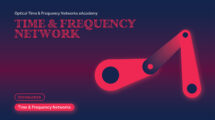Juha Oinonen is the new director of the Finnish Research and Education Network FUNET at CSC and a newly appointed member of the GÉANT General Assembly (GA). We spoke with him about his new role and about CSC’s plans for the future.
Juha, tell us more about yourself and about your career at CSC/FUNET
My history at CSC dates back to the mid 1990s, when I worked on a High-Performance Computing (HPC) project at CSC, but it’s only towards the end of the decade – once I graduated in computer science – that I became employed full-time. When I started, I was supposed to be hired on the computational side, but at that time the internet bubble started to get bigger… and I ended up in FUNET.
At FUNET, I started as a network specialist working with both network and services for a couple of years. Then for a decade I held different managerial positions within FUNET, after which I temporarily shifted to various activities in the organisation. I’ve never been far from FUNET though, so being in my current position feels like getting back home. It’s been a very interesting environment to work in and here I have had the pleasure of working with very talented people both nationally and internationally. I’m confident that it’ll be the same also in this new role, and I’m looking forward to the future.
Congratulations on your new role as director of FUNET at CSC. How does this relate to the latest changes and developments at CSC?
Thank you! The gradual updates that have been taking place this year and in the past few years in the CSC management structure reflect the changes in our activities and the growth of the company. Obviously, these changes are necessary in a growing organisation, as they help to find possible bottlenecks and tackle them by reorganising and finding new people and new roles where needed.
It’s important to mention that CSC is in a somewhat different or even unique situation if compared to many other NRENs: we have a strong role on HPC, we offer a wide spectrum of different ICT services, and we are very active on information management and on data management, including sensitive data. And we provide services not only for universities and research organisations, but also for governmental organisations, for example in the field of culture or in general administration. Additionally, hosting both NREN and HPC activities under the same roof makes certain things easier, for example with reaching specialists or finding the necessary decision makers and getting them at the same table.
CSC has a very interesting position, being at the same time an NREN and a EuroHPC site via LUMI. Can you tell us more about it?
I believe that the factors that led us to host LUMI in Kajaani – other than for example the availability of green and predictably priced electricity – have much to do with the strategic decisions that CSC took for national HPC services many years ago, finding new solutions and new collaborations in providing datacentre facilities. When LUMI was being planned, we were already present in Kajaani with a small number of employees, which were there to provide the services necessary for our own HPC systems.
And, as I said, CSC is more than just NREN plus HPC. CSC started on research and science computing already in the 1970s, when it was still part of the National Computing Center, operating computers for different kinds of governmental organisations, like the car registry and tax authorities. In 1971, the CSC unit obtained the first computer dedicated to science and research in Finland, but at the same time it was confronted with a great challenge: now they had the computer, but did researchers know how to use it?
It’s since then that CSC has been providing user support for computational science. For instance, we help users with the software and with scientific or numerical methods, not just giving them a login prompt. We publish guides and books, provide training in the form of courses, and organise outreach towards our users in universities and research groups. I think that this solid track record contributed to our selection as a EuroHPC site and to the evolution of CSC’s role.
How do you see your new role in the GÉANT General Assembly (GA) and in the GÉANT Community?
CSC is a member of NORDUnet and the formal representation of CSC/FUNET and Finland in GÉANT goes via our NORDUnet membership. However, CSC is also in the GA as an observer. In that capacity we participate in meetings and contribute to the discussions, but not to the decision-making. It’s of course very important that these collaboration structures are in place, that they are working, and that they manage to represent in a fair way the different ideas across NRENs and the different national situations.
In my previous FUNET life, some 20 years ago, I wasn’t in the position to have this kind of participation in governance structures. Back then NRENs were running bleeding edge technologies and the challenges were different and often technical, but many things have changed since then. Numerous challenges have been tackled, thanks to network technology being much more mature and widely used in other areas. Of course, not all has been solved yet and there are still different situations in different countries, but we have been able to move forward a good deal in many aspects.
Now that there are not so many of those early-days issues, we can focus more on our users, on their needs and requirements, and on providing value for them and for European taxpayers.
The GN4-3N project is currently upgrading connectivity between the NORDUnet and GÉANT networks, including new routes Hamburg–Helsinki and Helsinki–Tartu. How will these upgrades benefit the Finnish Research & Education network?
FUNET is connected to GÉANT and other NRENs via NORDUnet. These new connections, once completed, will provide more resiliency for international connectivity, bypassing parts of the current shared infrastructure. With respect to additional capacity and also their optimised topology, they will be particularly of importance for LUMI users.
Juha, can you tell us more about CSC’s and FUNET’s plans for the future? What’s ahead? And how is FUNET preparing to support the requirements of EuroHPC?
We just finished a major network upgrade, branded FUNET 2020, which was fully finalised last year. One of the aspects was adding extra resiliency to the network connectivity of Kajaani’s EuroHPC site. We are now very well placed with our national fibre optic and IP networks and also in the NORDUnet model, which provides connectivity between Nordic countries via national NRENs, together with NORDUnet’s coordination and infrastructure on the IP level. In that respect, we are now future-ready.
We also have plans to increase national network capacity, preparing the partial upgrade of 100Gbps connections to 400Gbps. On the service side, we will be increasing the focus on information security and related services for our users.
Finally, this year we celebrate FUNET’s 40th anniversary. The initial set-up of the FUNET project took place in December 1983, and the building of the network and services started soon after that. Keep an eye on CSC’s channels to join the celebration!
This article is featured on CONNECT43! Read or download the full magazine here






